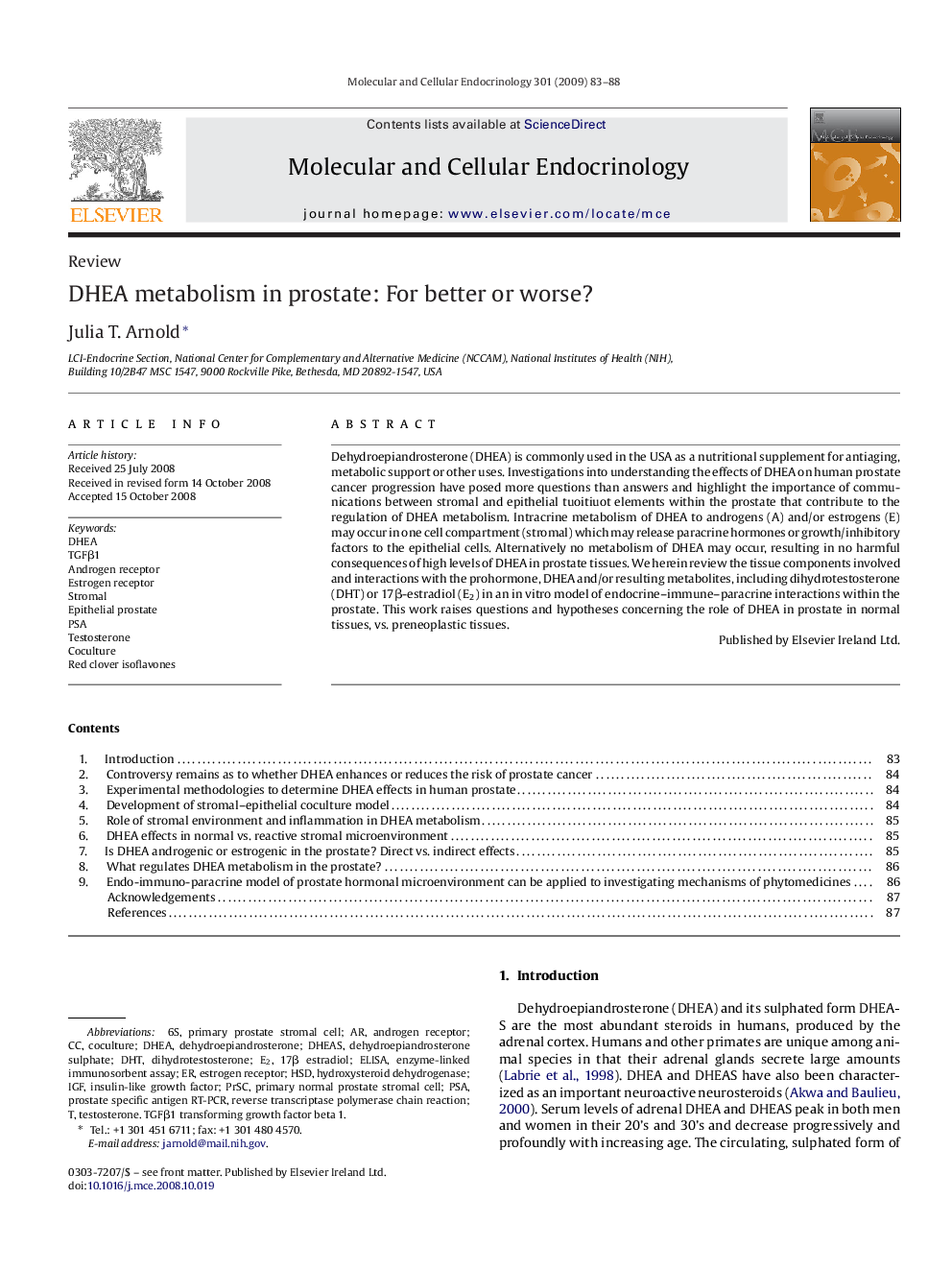| Article ID | Journal | Published Year | Pages | File Type |
|---|---|---|---|---|
| 2197360 | Molecular and Cellular Endocrinology | 2009 | 6 Pages |
Dehydroepiandrosterone (DHEA) is commonly used in the USA as a nutritional supplement for antiaging, metabolic support or other uses. Investigations into understanding the effects of DHEA on human prostate cancer progression have posed more questions than answers and highlight the importance of communications between stromal and epithelial tuoitiuot elements within the prostate that contribute to the regulation of DHEA metabolism. Intracrine metabolism of DHEA to androgens (A) and/or estrogens (E) may occur in one cell compartment (stromal) which may release paracrine hormones or growth/inhibitory factors to the epithelial cells. Alternatively no metabolism of DHEA may occur, resulting in no harmful consequences of high levels of DHEA in prostate tissues. We herein review the tissue components involved and interactions with the prohormone, DHEA and/or resulting metabolites, including dihydrotestosterone (DHT) or 17β-estradiol (E2) in an in vitro model of endocrine–immune–paracrine interactions within the prostate. This work raises questions and hypotheses concerning the role of DHEA in prostate in normal tissues, vs. preneoplastic tissues.
